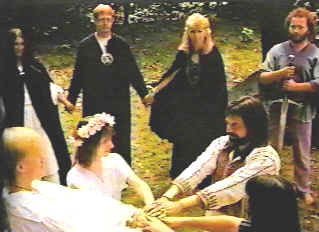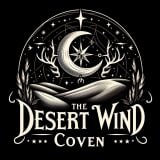
A modern Wicca Coven performs a outdoor ritual.
Gaining Recognition
For a long time, Wicca was seen as being simply a minor sect, or cult. However, with the rise of solitary practitioners describing themselves as Wiccans, the faith went from becoming simply a mystery cult to becoming a public religion.
Groups were formed to represent the Wiccan community, such as the Covenant of the Goddess, which was founded in 1975. Wiccans began to appear on various British television documentaries, including The Heaven & Earth Show and Desperately Seeking Something.
In the USA, the court case of Dettmer v. Landon in 1986 established that Wicca was a religion, and therefore should be treated as such under the eyes of the law.
The first Wiccan Wedding to be legally recognized in the UK (by the Registrars of Scotland) was performed in 2004
